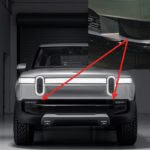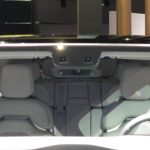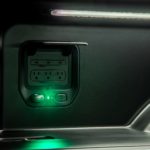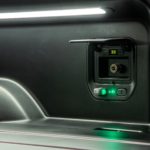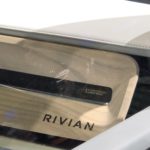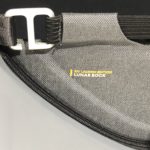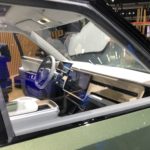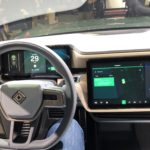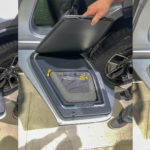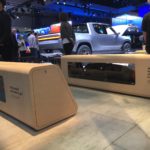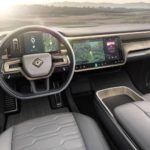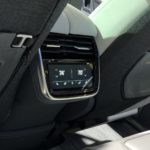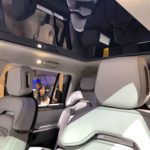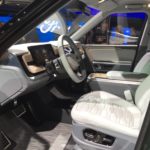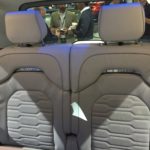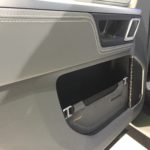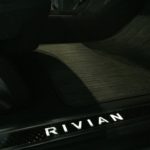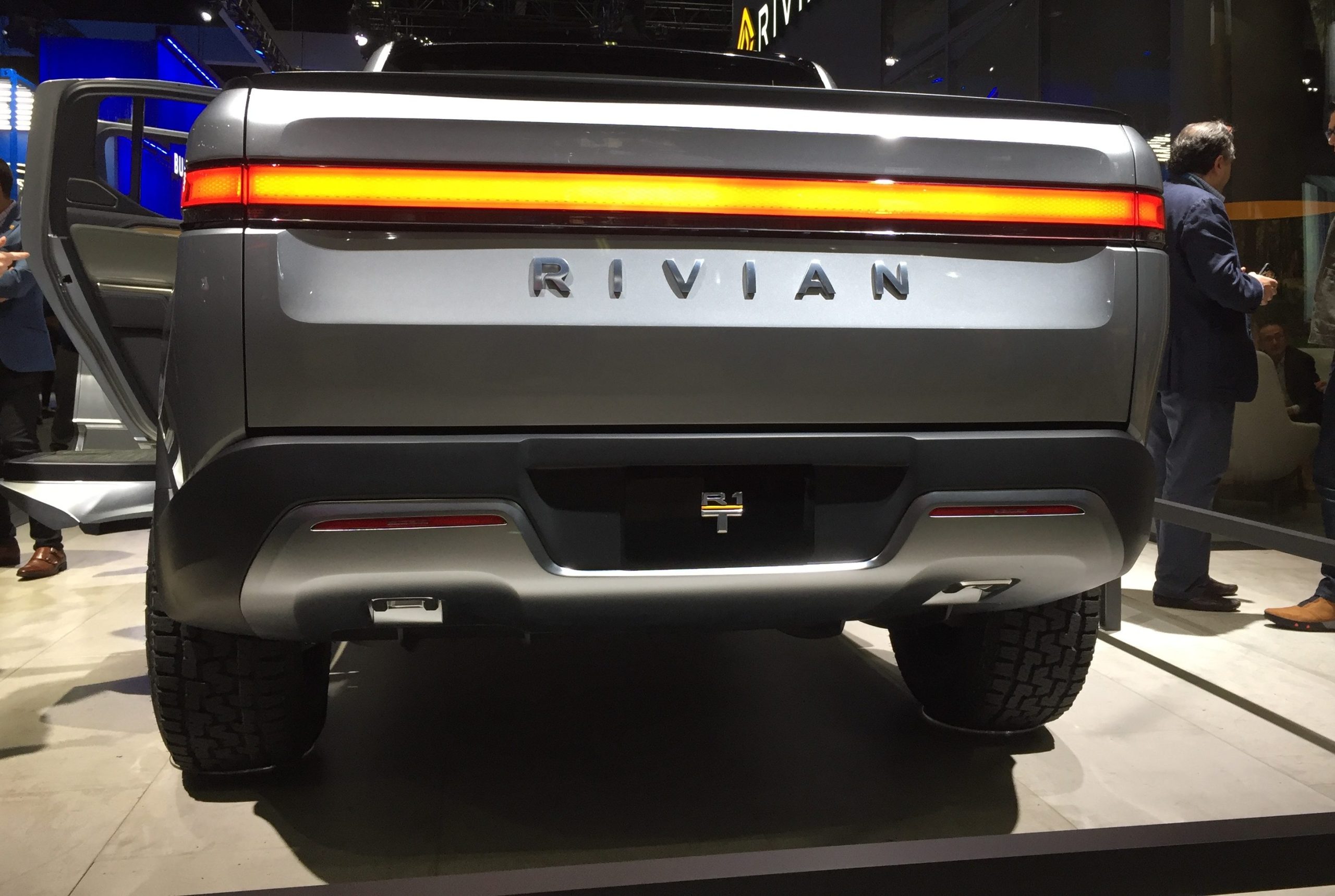
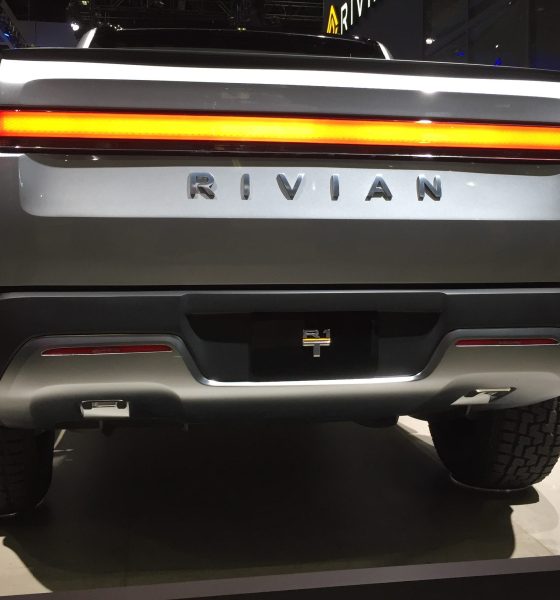
News
Rivian R1T and R1S: Top 10 hidden features that make an electric off-road vehicle
Rivian came out of the shadows this week with a bang, unveiling two impressive all-electric luxury adventure vehicles — the R1T pickup truck and the R1S SUV. While both vehicles are armed to the teeth with cutting-edge tech, the R1T and the R1S are true-blooded off-road machines that are as capable off the beaten path as they are on paved highways.
The R1T and the R1S share the same platform, and both vehicles carry the brand’s no-compromises approach to utility and storage. Inasmuch as details of the two electric vehicles have caught the eye of the auto community, though, it should be noted that Rivian’s pickup truck and SUV have a number of compelling, almost “hidden” features that are yet to be discussed. Here are ten of the most notable.
1. Dual LiDAR and front-facing cameras for semi-autonomous driving
Rivian notes that both the R1T and the R1S will eventually be capable of Level 3 Self-Driving on highways. To accomplish this, the company has equipped the R1T and the R1S with a suite of cameras, radar, ultrasonic sensors, high-precision GPS technologies, and LiDAR. Images taken by Teslarati reveal that two of the cameras are found behind the vehicles’ rearview mirror, while their two LiDAR units are situated below the pickup truck and the SUV’s “Stadium” headlights.
- (Photos: Rivian, Christian Prenzler)
- (Photo: Christian Prenzler)
2. USB-C Ports, 110v outlets, and air compressors
At the back of the Rivian R1T pickup truck bed lies a set of 3 USB-C and 3 110V outlets, which would be an invaluable feature for owners who love to camp outdoors (the feature pretty much makes the R1T into a giant power bank). The built-in air compressor will also be useful for owners who are transporting bikes and inflatables during trips.
- (Photo: Rivian)
- (Photo: Rivian)
3. R1T liftgate and truck bed tricks
Both the R1T’s liftgate and truck bed are electric-powered, which gives the vehicle some nifty tricks. With the touch of a button, owners could open the pickup’s liftgate in either a 90-degree or 180-degree angle, the former being incredibly useful for transporting long cargo and the latter being a perfect way to access items on the truck bed easily. The R1T is also capable of automatically deploying or retracting its bed covering, which protects cargo from dirt and rain, to name a few.
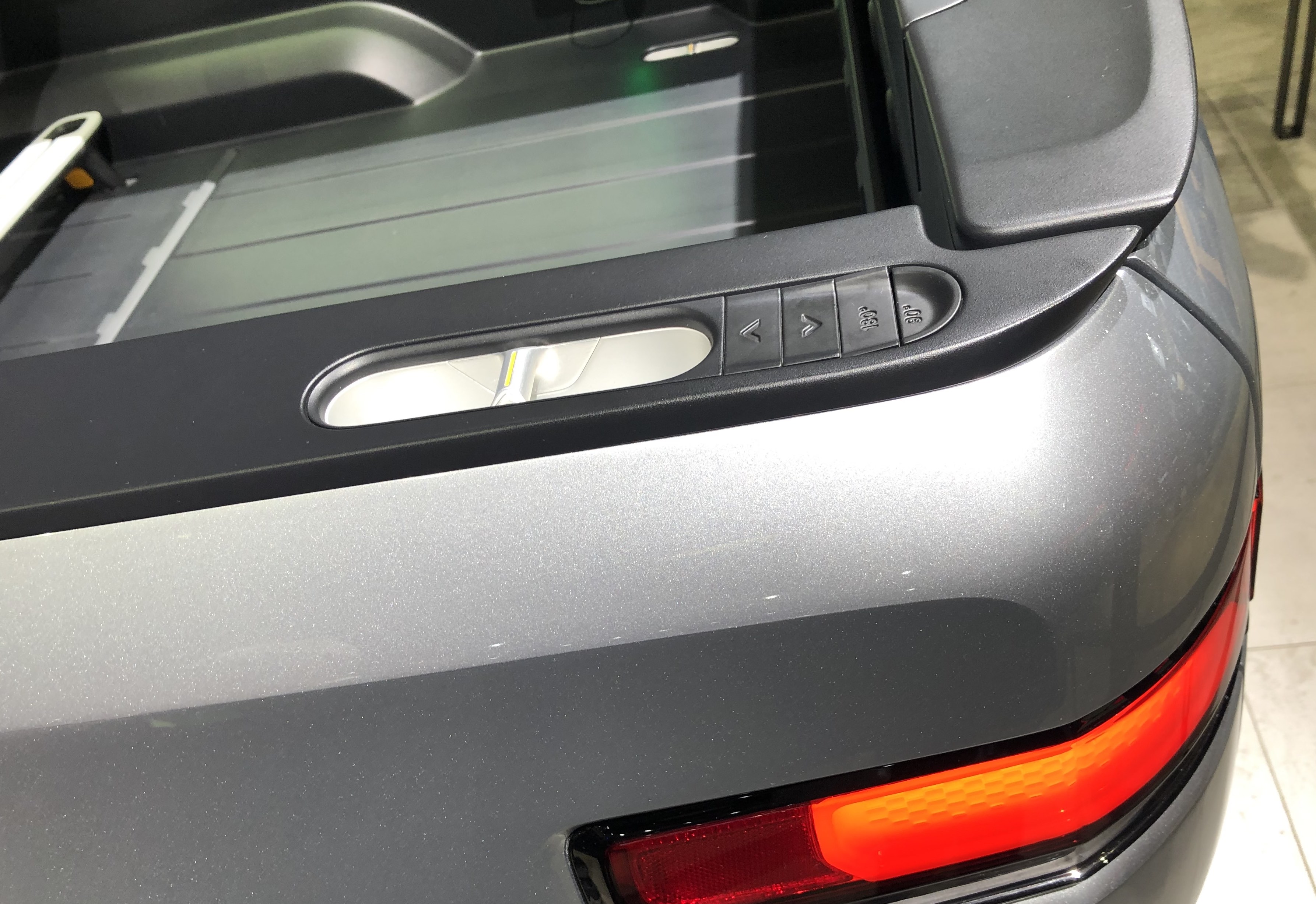
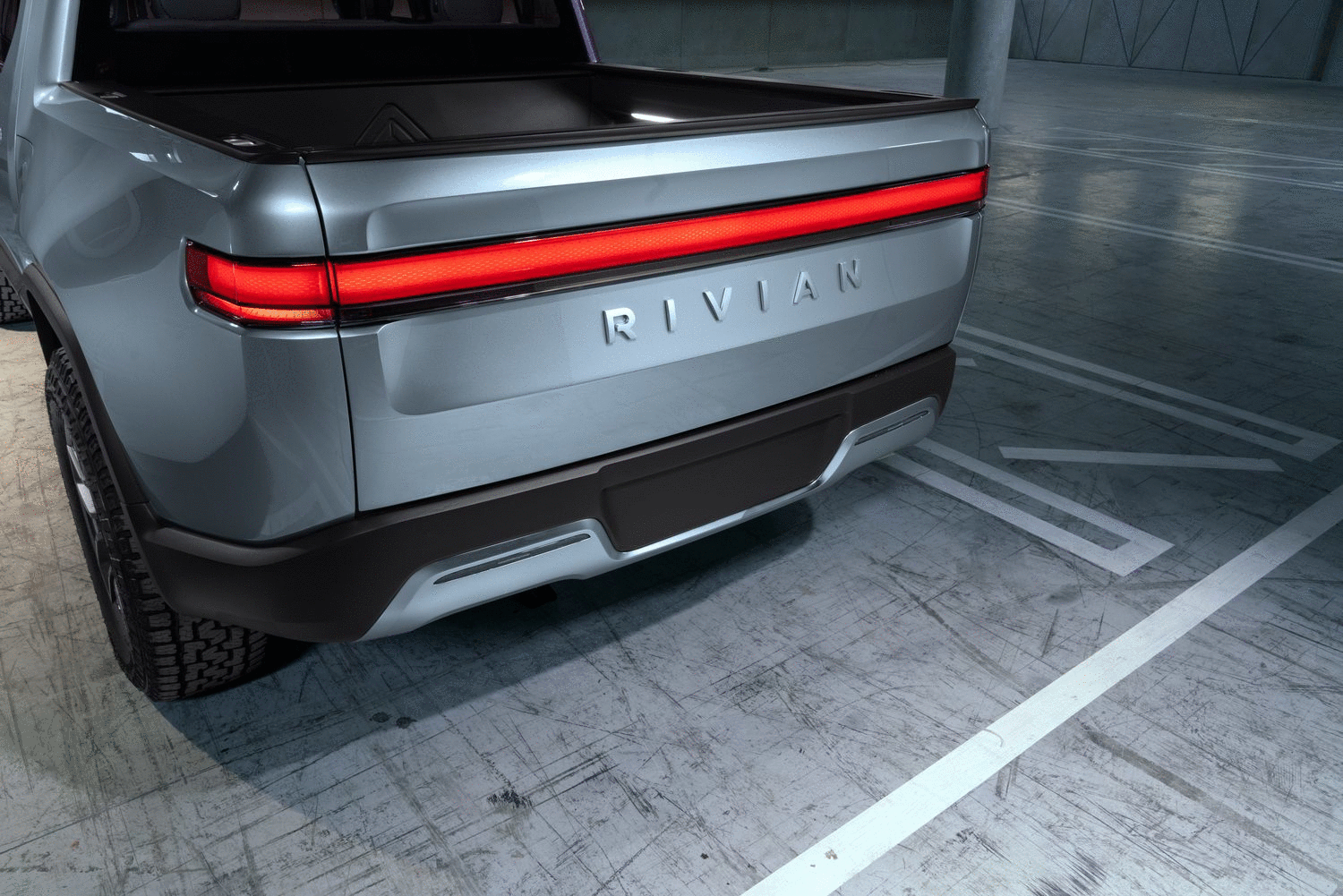
4. Removable Carbon Fiber Aero Wheel inserts
Rivian’s R1T pickup truck debuted with a set of wheels that featured what appeared to be carbon fiber Aero inserts. Such design elements maximize range and improve battery efficiency, as observed by Tesla Model 3 owners who tested their electric sedan’s consumption with and without Aero covers in place. Considering that Rivian’s vehicles are built for tough environments, optimizations such as Aero inserts could go a long way in ensuring that the vehicles get as much range as they can.
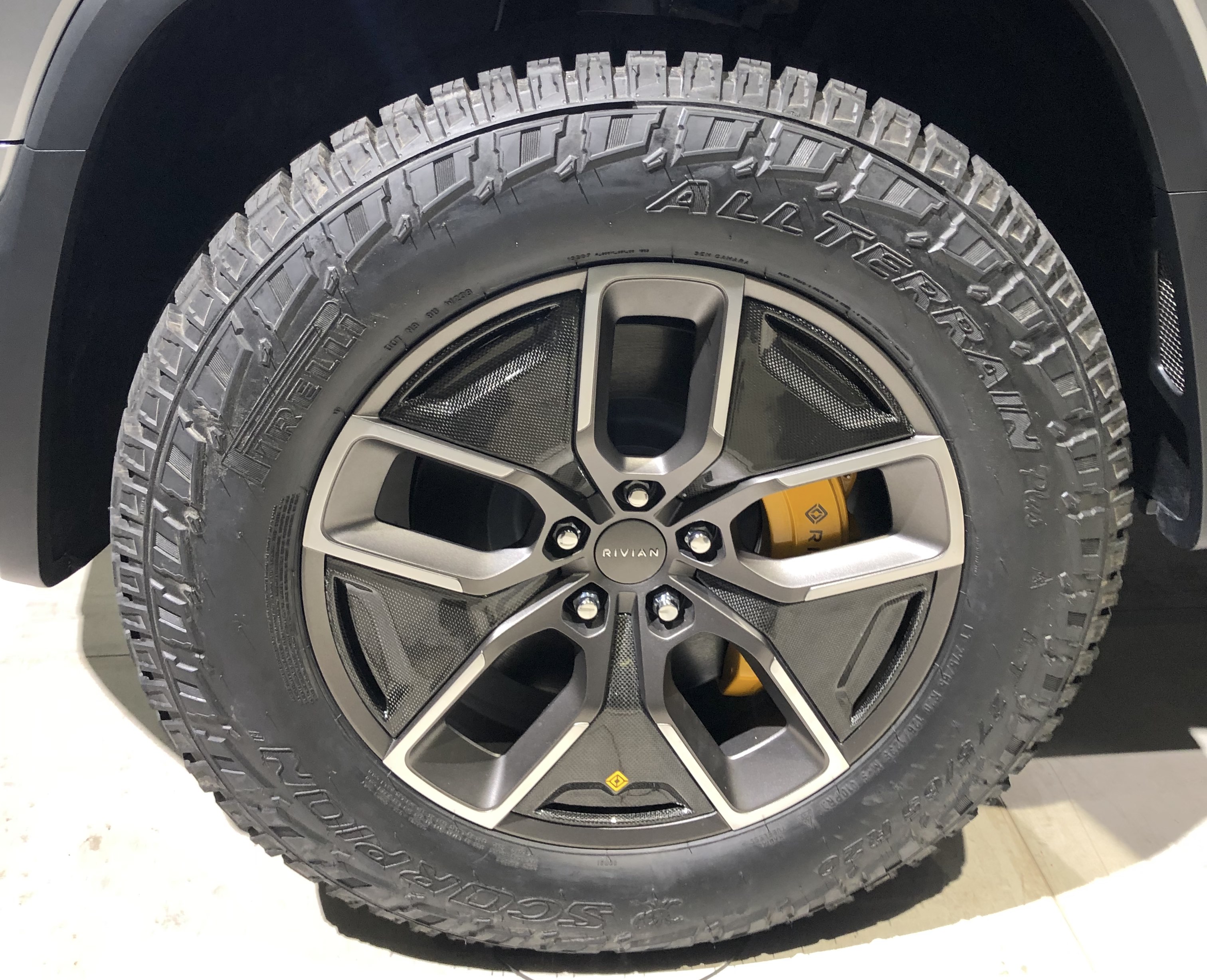
5. Rivian’s “Launch Edition Lunar Rock” variant
While Rivian is yet to announce if it would release a special trim for its first production vehicles, similar to Tesla’s “Founders Series” and Audi’s “Edition One” for the e-tron SUV, photos of the R1S that we captured show a distinct branding — “Riv Launch Edition Lunar Rock.” As such, early reservation holders of Rivian’s luxury electric vehicles would likely find themselves in a special edition vehicle.
- Details of the Rivian R1T and the Rivian R1S. [Credit: Chistian Prenzler/Teslarati]
- Details of the Rivian R1T and the Rivian R1S. [Credit: Chistian Prenzler/Teslarati]
6. Ventless HVAC
Both the Rivian R1T and the R1S feature vents with automated controls, with the pickup truck and SUV’s air conditioning being managed by the vehicles’ fully-automated “Ambient AC” system. If the EV community’s warm reception to the Model 3’s air vents is any indication, there is a good chance that customers would be fond of the R1T and R1S’ “Ambient AC” system as well.
- Details of the Rivian R1T and the Rivian R1S. [Credit: Chistian Prenzler/Teslarati]
7. “Gear Tunnel” compartments
A key feature of the Rivian R1T is its “Gear Tunnel,” a storage space that runs the entire width of the pickup truck and is optimized to store long items such as fishing rods and golf clubs. That’s not all, though, as even the Gear Tunnel’s covers have hidden storage in them, which could fit a small bag. Considering the potential of the storage space, perhaps Rivian could even introduce a sliding rail for the Gear Tunnel in the future, which would make retrieving items easier.
- (Photo: Christian Prenzler)
- Details of the Rivian R1T and the Rivian R1S. [Credit: Chistian Prenzler/Teslarati]
8. Infotainment systems front and back
Both the Rivian R1T and the R1S are loaded to the teeth with tech. This is evident in the robust touchscreen interfaces on the vehicle, from the large center console in front to a smaller 6.8-inch touchscreen at the back, where passengers can set their preferences for features such as climate control.
- The Rivian R1S dashboard. [Credit: Rivian]
- (Photo: Christian Prenzler)
9. A cool, hidden flashlight
Being an adventure vehicle, the R1T and the R1S are fitted with a novel and very practical feature — a flashlight embedded on the vehicle’s front doors. Simple? Yes. Useful for the outdoors? Most certainly.
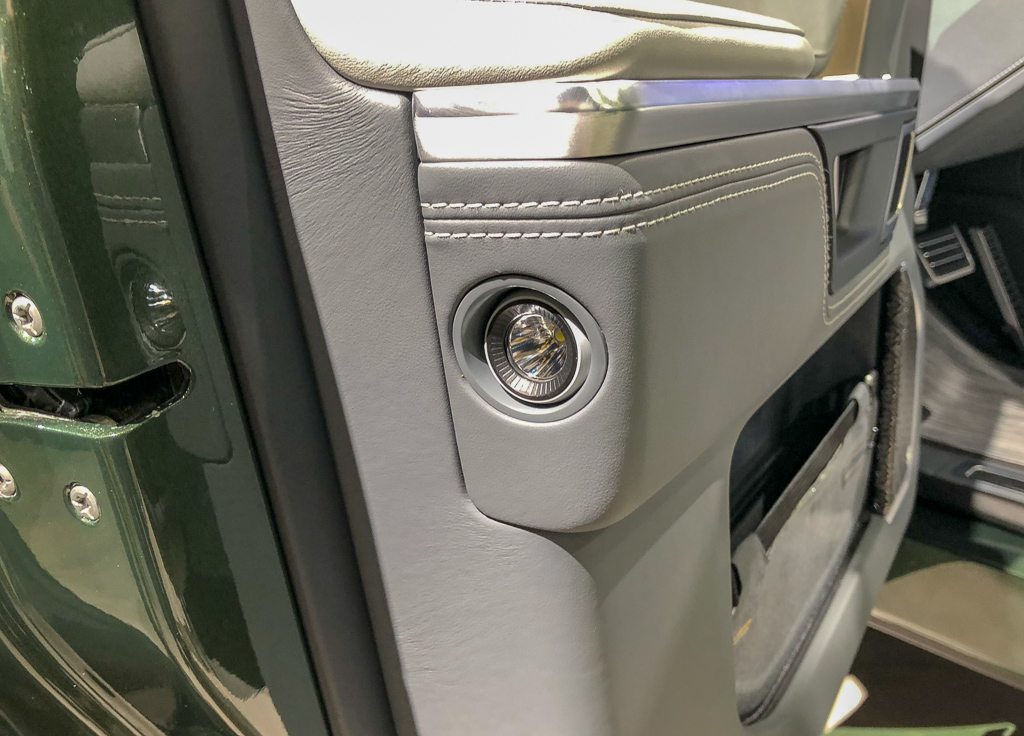
10. Eco-friendly flourishes
Rivian has made it a point to equip its vehicles with materials that are premium and eco-friendly at the same time. The floor mats, for example, are made from a thin, lightweight materials that almost feels like carbon fiber. The vehicles’ seats are covered in vegan-friendly materials as well. The company’s attention to detail is also notable, as evidenced by the subtle flourishes of the Rivian branding in areas such as the dashboard.
- Details of the Rivian R1T and the Rivian R1S. [Credit: Chistian Prenzler/Teslarati]
- Details of the Rivian R1T and the Rivian R1S. [Credit: Chistian Prenzler/Teslarati]
- Details of the Rivian R1T and the Rivian R1S. [Credit: Chistian Prenzler/Teslarati]
- Details of the Rivian R1T and the Rivian R1S. [Credit: Chistian Prenzler/Teslarati]
- Details of the Rivian R1T and the Rivian R1S. [Credit: Chistian Prenzler/Teslarati]
Reservations for the R1T pickup truck and the R1S SUV are now open. Interested customers can place a refundable $1,000 deposit for each of the vehicles here. Rivian expects to begin production of the R1T in 2020, followed by the R1S in 2021.

Cybertruck
Tesla updates Cybertruck owners about key Powershare feature

Tesla is updating Cybertruck owners on its timeline of a massive feature that has yet to ship: Powershare with Powerwall.
Powershare is a bidirectional charging feature exclusive to Cybertruck, which allows the vehicle’s battery to act as a portable power source for homes, appliances, tools, other EVs, and more. It was announced in late 2023 as part of Tesla’s push into vehicle-to-everything energy sharing, and acting as a giant portable charger is the main advantage, as it can provide backup power during outages.
Cybertruck’s Powershare system supports both vehicle-to-load (V2L) and vehicle-to-home (V2H), making it flexible and well-rounded for a variety of applications.
However, even though the feature was promised with Cybertruck, it has yet to be shipped to vehicles. Tesla communicated with owners through email recently regarding Powershare with Powerwall, which essentially has the pickup act as an extended battery.
Powerwall discharge would be prioritized before tapping into the truck’s larger pack.
However, Tesla is still working on getting the feature out to owners, an email said:
“We’re writing to let you know that the Powershare with Powerwall feature is still in development and is now scheduled for release in mid-2026.
This new release date gives us additional time to design and test this feature, ensuring its ability to communicate and optimize energy sharing between your vehicle and many configurations and generations of Powerwall. We are also using this time to develop additional Powershare features that will help us continue to accelerate the world’s transition to sustainable energy.”
Owners have expressed some real disappointment in Tesla’s continuous delays in releasing the feature, as it was expected to be released by late 2024, but now has been pushed back several times to mid-2026, according to the email.
Foundation Series Cybertruck buyers paid extra, expecting the feature to be rolled out with their vehicle upon pickup.
Cybertruck’s Lead Engineer, Wes Morrill, even commented on the holdup:
As a Cybertruck owner who also has Powerwall, I empathize with the disappointed comments.
To their credit, the team has delivered powershare functionality to Cybertruck customers who otherwise have no backup with development of the powershare gateway. As well as those with solar…
— Wes (@wmorrill3) December 12, 2025
He said that “it turned out to be much harder than anticipated to make powershare work seamlessly with existing Powerwalls through existing wall connectors. Two grid-forming devices need to negotiate who will form and who will follow, depending on the state of charge of each, and they need to do this without a network and through multiple generations of hardware, and test and validate this process through rigorous certifications to ensure grid safety.”
It’s nice to see the transparency, but it is justified for some Cybertruck owners to feel like they’ve been bait-and-switched.
News
Tesla’s northernmost Supercharger in North America opens

Tesla has opened its northernmost Supercharger in Fairbanks, Alaska, with eight V4 stalls located in one of the most frigid cities in the U.S.
Located just 196 miles from the Arctic Circle, Fairbanks’s average temperature for the week was around -12 degrees Fahrenheit. However, there are plenty of Tesla owners in Alaska who have been waiting for more charging options out in public.
There are only 36 total Supercharger stalls in Alaska, despite being the largest state in the U.S.
Eight Superchargers were added to Fairbanks, which will eventually be a 48-stall station. Tesla announced its activation today:
North America’s northernmost Supercharger Fairbanks, AK (8 stalls) opened to public. https://t.co/M4l04DZ6B5 pic.twitter.com/zyL6bDuA93
— Tesla Charging (@TeslaCharging) December 12, 2025
The base price per kWh is $0.43 at the Fairbanks Supercharger. Thanks to its V4 capabilities, it can charge at speeds up to 325 kW.
Despite being the northernmost Supercharger in North America, it is not even in the Top 5 northernmost Superchargers globally, because Alaska is south of Norway. The northernmost Supercharger is in Honningsvåg, Norway. All of the Top 5 are in the Scandanavian country.
Tesla’s Supercharger expansion in 2025 has been impressive, and although it experienced some early-quarter slowdowns due to V3-to-V4 hardware transitions, it has been the company’s strongest year for deployments.
🚨🚨 Tesla Supercharging had a HUGE year, and they deserve to be recognized.
🍔 Opened Tesla Diner, a drive-in movie theater with awesome, Chef-curated cuisine
🔌 Gave access to Superchargers to several EV makers, including Hyundai, Genesis, Mercedes-Benz, Kia, Lucid, Toyota,… pic.twitter.com/yYT2QEbqoW
— TESLARATI (@Teslarati) December 10, 2025
Through the three quarters of 2025, the company has added 7,753 stations and 73,817 stalls across the world, a 16 percent increase in stations and an 18 percent increase in stalls compared to last year.
Tesla is on track to add over 12,000 stalls for the full year, achieving an average of one new stall every hour, an impressive statistic.
Recently, the company wrapped up construction at its Supercharger Oasis in Lost Hills, California, a 168-stall Supercharger that Tesla Solar Panels completely power. It is the largest Supercharger in the world.
News
Tesla shocks with latest Robotaxi testing move
Why Tesla has chosen to use a couple of Model S units must have a reason; the company is calculated in its engineering and data collection efforts, so this is definitely more than “we just felt like giving our drivers a change of scenery.”

Tesla Model S vehicles were spotted performing validation testing with LiDAR rigs in California today, a pretty big switch-up compared to what we are used to seeing on the roads.
Tesla utilizes the Model Y crossover for its Robotaxi fleet. It is adequately sized, the most popular vehicle in its lineup, and is suitable for a wide variety of applications. It provides enough luxury for a single rider, but enough room for several passengers, if needed.
However, the testing has seemingly expanded to one of Tesla’s premium flagship offerings, as the Model S was spotted with the validation equipment that is seen entirely with Model Y vehicles. We have written several articles on Robotaxi testing mules being spotted across the United States, but this is a first:
🚨 Tesla is using Model S vehicles fitted with LiDAR rigs to validate FSD and Robotaxi, differing from the Model Ys that it uses typically
Those Model Y vehicles have been on the East Coast for some time. These Model S cars were spotted in California https://t.co/CN9Bw5Wma8 pic.twitter.com/UE55hx5mdd
— TESLARATI (@Teslarati) December 11, 2025
Why Tesla has chosen to use a couple of Model S units must have a reason; the company is calculated in its engineering and data collection efforts, so this is definitely more than “we just felt like giving our drivers a change of scenery.”
It seems to hint that Tesla could add a premium, more luxury offering to its Robotaxi platform eventually. Think about it: Uber has Uber Black, Lyft has Lyft Black. These vehicles and services are associated with a more premium cost as they combine luxury models with more catered transportation options.
Tesla could be testing the waters here, and it could be thinking of adding the Model S to its fleet of ride-hailing vehicles.
Reluctant to remove the Model S from its production plans completely despite its low volume contributions to the overall mission of transitioning the world to sustainable energy, the flagship sedan has always meant something. CEO Elon Musk referred to it, along with its sibling Model X, as continuing on production lines due to “sentimental reasons.”
However, its purpose might have been expanded to justify keeping it around, and why not? It is a cozy, premium offering, and it would be great for those who want a little more luxury and are willing to pay a few extra dollars.
Of course, none of this is even close to confirmed. However, it is reasonable to speculate that the Model S could be a potential addition to the Robotaxi fleet. It’s capable of all the same things the Model Y is, but with more luxuriousness, and it could be the perfect addition to the futuristic fleet.
